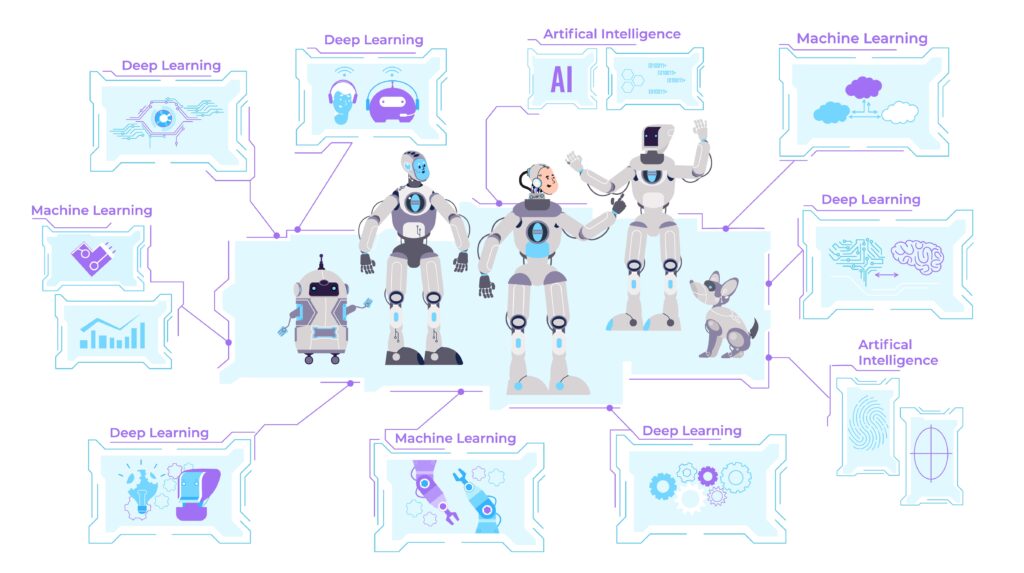Machine Learning Model Development Best Practices: An Introduction
Having a clear idea on machine learning model development best practices is important. Machine learning has emerged as a transformative technology across various industries, from healthcare to finance to marketing. As organizations increasingly rely on machine learning models to make critical decisions, the importance of adhering to best practices in model development cannot be overstated. Developing a robust machine learning model involves a series of well-defined steps, each crucial for ensuring accuracy, reliability, and ethical integrity.

This article outlines essential best practices for machine learning model development, guiding practitioners through the process from problem definition to deployment and ongoing monitoring. By following these best practices, data scientists and machine learning engineers can enhance their models’ performance, address potential biases, and foster transparency in their applications. Whether you’re a seasoned professional or new to the field, understanding these principles will empower you to create effective and responsible machine learning solutions that drive value and innovation.
1. Clearly Define the Problem
The initial step in creating a machine learning model is to articulate the problem you aim to address. A well-defined problem statement serves as a roadmap for the entire project, influencing data collection, feature engineering, model selection, and evaluation. Key practices include:
- Understand the Objective: Comprehend what the model is intended to accomplish, whether it’s predicting sales, detecting fraud, or classifying images.
- Specify Performance Metrics: Determine how success will be quantified, using metrics such as accuracy, precision, recall, or F1 score. Different scenarios necessitate different evaluation metrics.
- Frame the Problem Appropriately: Identify whether the issue is one of classification, regression, or clustering. Correctly framing the problem will inform your choice of algorithms and evaluation methods.
2. Collect and Prepare High-Quality Data
Data forms the foundation of any machine learning initiative. Without clean, relevant, and ample data, even the most sophisticated algorithms will struggle. Best practices for data collection and preparation include:
- Collect High-Quality Data: Ensure that the data is accurate, representative, and sufficiently large for your needs. This may involve gathering new data or utilizing existing datasets.
- Data Preprocessing: Clean the dataset by addressing missing values, eliminating outliers, and correcting errors. Normalize or scale numerical features and encode categorical variables as needed.
- Feature Engineering: Enhance the model’s learning capacity by creating new features or transforming existing ones. This could involve combining features, generating interaction terms, or extracting significant features from raw data (e.g., deriving time-based features from dates).
- Data Splitting: Divide your dataset into training, validation, and test sets to ensure that the model is trained on one subset and evaluated on another to prevent overfitting.
3. Select the Right Model

Choosing the correct algorithm is vital for the model’s success. Some best practices for model selection include:
- Start with Simpler Models: Begin with straightforward models (such as linear regression or decision trees) before progressing to more complex ones (like neural networks). This approach helps build a solid understanding of the data.
- Understand Model Assumptions: Each machine learning model comes with specific assumptions (e.g., linearity in linear regression). Ensure these assumptions align with your data and problem context.
- Consider Interpretability: Depending on your application area, it may be crucial that the model is interpretable. For example, in fields like healthcare or finance, explainable models are often preferred over opaque models like deep learning.
4. Train the Model Effectively

Training is at the core of the machine learning process. Best practices for effective training include:
- Hyperparameter Tuning: Most models have hyperparameters that influence their learning process (e.g., learning rate for neural networks or decision tree depth). Utilize techniques like grid search or random search to identify optimal hyperparameters.
- Cross-validation: Implement cross-validation (e.g., k-fold cross-validation) to robustly assess model performance. This method helps ensure that performance metrics are not dependent on a specific data split and can generalize well to unseen data.
- Monitor Overfitting: Overfitting occurs when a model learns training data too thoroughly and performs poorly on new data. Regularization techniques such as L1/L2 regularization or dropout (in neural networks) can mitigate this risk.
- Feature Selection: Focus on selecting only the most relevant features to simplify the model and reduce overfitting risks. Techniques like recursive feature elimination (RFE) or evaluating feature importance from tree-based models can assist in this process.
5. Evaluate Model Performance
Assessing a machine learning model’s performance is crucial for understanding its ability to generalize to new data. Best practices include:
- Use Multiple Evaluation Metrics: Depending on your task, employ various metrics. For instance, in classification tasks, metrics such as accuracy, precision, recall, and F1 score provide a more comprehensive view of performance than accuracy alone.
- Confusion Matrix: A confusion matrix can visually represent a classification model’s performance by displaying true positives, false positives, true negatives, and false negatives.
- Check for Bias and Fairness: Ensure that your model does not discriminate unfairly against specific groups. This consideration is particularly vital in sensitive areas such as hiring, lending, and law enforcement.
6. Address Bias and Variance
Bias and variance are two primary sources of errors in machine learning models:
- Bias: Occurs when a model makes strong assumptions about the data and fails to capture underlying patterns (leading to underfitting).
- Variance: Arises when a model is overly sensitive to training data and mistakenly identifies noise as patterns (resulting in overfitting).
To balance bias and variance:
- Use simpler models to reduce variance if overfitting is detected.
- Opt for more complex models if high bias is observed (for example, using polynomial regression to capture intricate relationships).
- Employ regularization techniques and cross-validation to find an optimal balance between bias and variance.
7. Model Deployment and Monitoring

After training and evaluating a machine learning model, deployment follows as the next critical step. Best practices include:
- Versioning and Reproducibility: Maintain records of model versions along with the training data and configuration used. This practice ensures future reproducibility and allows tracking of performance changes over time.
- Deployment Pipeline: Establish an automated pipeline for training, testing, and deploying models. This setup facilitates scaling and streamlining of the machine learning lifecycle.
- Monitor Performance in Production: Recognize that models can degrade over time due to changing data (data drift). It’s essential to monitor performance continuously in production settings and periodically retrain models with updated data to sustain accuracy.
8. Continuous Improvement and Iteration
The development of machine learning models is inherently iterative. Best practices include:
- Feedback Loops: Collect feedback from users and stakeholders to pinpoint areas for improvement in the model. This may involve retraining with new data or modifying features.
- Iterate on the Model: Continue refining the model post-deployment by enhancing features, experimenting with new algorithms, or adjusting hyperparameters.
9. Ethical Considerations and Transparency
As machine learning applications expand across various sectors, ethical considerations become increasingly important. Best practices include:
- Bias and Fairness: Ensure that your model operates without bias and does not yield unfair or discriminatory predictions. Testing across diverse demographic groups can help ensure equity.
- Explainability: Provide stakeholders with clear explanations regarding how the model functions and how it reaches its predictions.
- Data Privacy: Adhere to legal and ethical data privacy standards, safeguarding user data and complying with relevant laws (e.g., GDPR, HIPAA).
[Want to learn more about best machine learning model development best practices? Click here to reach us.]
Conclusion
In conclusion, developing machine learning models requires careful adherence to best practices, from problem definition to performance monitoring. As organizations adopt AI, prioritizing ethical considerations like bias and fairness is essential. Implementing these practices enhances model effectiveness and builds stakeholder trust.
Leveraging solutions like Bobcares’ AI services can further support this journey, providing expert consulting and 24/7 assistance to ensure successful integration and deployment of machine learning initiatives. By embracing continuous improvement, data scientists can unlock the full potential of machine learning, driving innovation and creating meaningful impacts across various sectors.







0 Comments